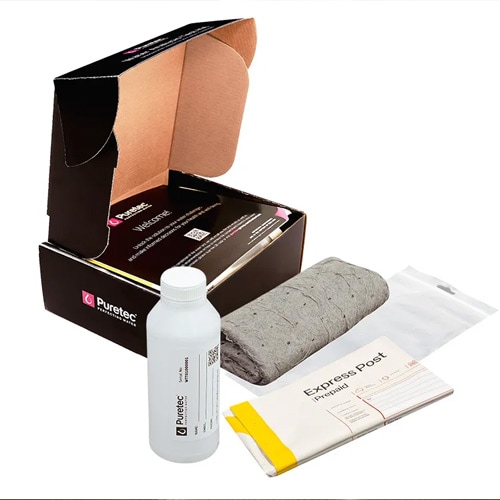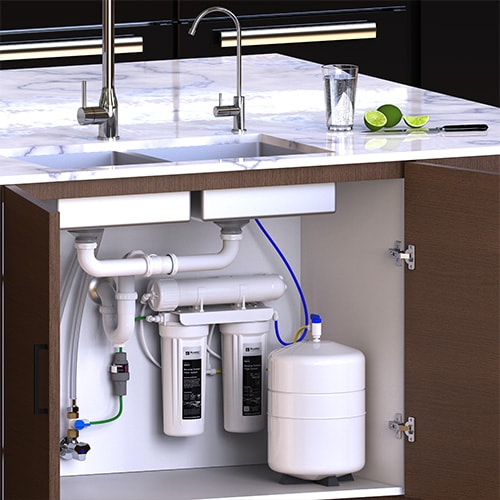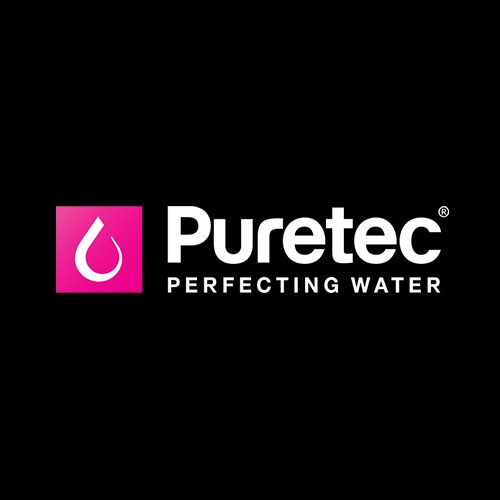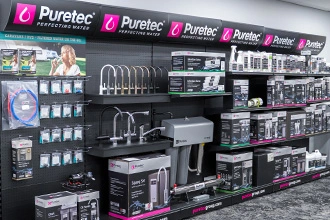Water fluoridation has been a topic of discussion for decades, and while it's a naturally occurring mineral, its presence in our drinking water has led many to feel concerned and seek filtration solutions.This article provides a look at fluoride, the science behind reverse osmosis (RO) filtration, and how to choose the right RO filter system for your needs.
What is Fluoride?
Fluoride is a mineral found in rocks, soil, plants, water, and even foods and beverages.
Back in the 1950’s, the natural levels of fluoride in our water was increased by Australian water suppliers in an attempt to improve the nation's teeth, a practice known as water fluoridation. Not all water was affected by this, as some parts of Australia naturally had sufficient fluoride levels in their water to benefit dental health, and additional fluoridation was not seen as required.
Since then, theNational Health and Medical Research Council (NHMRC)has shown that drinking fluoridated water overall can reduce tooth decay by 26-44% in Australian children, teenagers, and adults.
With this in mind, your teeth can benefit from fluoride in the following ways:
- •Reduced tooth decay and fewer cavities
- •Strengthened tooth enamel
- •Decreased dental treatment costs
- •Prevention of harmful oral bacteria growth
- •Less need for fillings and extractions

How can I know the level of Fluoride in my water?
Each Australian State and Territory has water-quality organisations that test and report on potential contaminants in water, including fluoride. Local public health organisations are also excellent resources for information regarding fluoride levels.
However, certified laboratory testing is the most reliable method for determining fluoride levels in water. These tests provide detailed information on various contaminants and express fluoride levels in milligrams per litre (mg/L) or parts per million (PPM).
Puretec has developed aWater Analysis Test Kitto easily evaluate your water quality by taking a sample, sending it in to us, and you can receive a detailed report back to you.

If I choose to, how can I filter Fluoride from my water?
A Reverse osmosis (RO) filter is highly effective at eliminating fluoride and other contaminants from your water. They also eliminate other impurities, including heavy metals, nitrates, and various chemicals.
What is Reverse Osmosis?
Reverse osmosis is a process where the water is forced through a semi-permeable membrane that allows water molecules to pass through while blocking larger molecules such as fluoride, salts, metals, minerals, and other contaminants. This method is highly effective in purifying water, making it a popular choice for home and industrial water filtration systems.

How can I select the right reverse osmosis filter for my needs?
It's important to consider the following factors:
- •Water Quality:Use a test kit to determine what contaminants need to be addressed.
- •Flow Rate:Consider how quickly you require filtered water.
- •Water Waste:Reverse osmosis systems produce some wastewater. Look for environmentally friendly options that minimise waste. For example, thePuretec Reverse osmosis systemhas a built-in shut-off valve, stopping water production when the storage tank is full.
Puretec offers a range of Reverse osmosis water filter tailored to different needs:
- •Under sink RO filter:Convenient for home use, providing clean drinking water directly from your tap. This is installed under your kitchen sink.
- •Commercial RO filter:Ideal for cafés and restaurants, ensuring high-quality water for beverages.
If you are thinking of installing a reverse osmosis water filter, it’s recommended to add aremineralising cartridgeafter the system, to balance the pH level and add essential minerals back into your water.
Conclusion
If fluoride is a concern for you and your family, a reverse osmosis system is an effective method for purifying water, removing contaminants and Fluoride. Whether you require areverse osmosis water filteror afiltration solution,understanding your water quality and filtration needs will help you choose the best system for your home or business.
Why choose Puretec systems?
For over 35 years, Puretec has been providing exceptional water purification solutions across Australia and New Zealand. You can trust that you’re getting top-quality water filtration solutions tailored to your needs. As trusted experts in water filtration, we offer world-class solutions that embody our commitment to ‘Perfecting Water’. Explore our range of reverse osmosis systems and experience the health benefits of pure, clean water.

FAQs
Does reverse osmosis remove all chlorine?
Reverse osmosis water filters remove up to 98% of the chlorine content in water, but it ultimately depends on the amount of chlorine you have in your water supply.
Does reverse osmosis remove heavy metals, salt, and minerals?
ThePuretec under sink Reverse osmosis water filtereffectively eliminates up to 98% of all dissolved impurities, including heavy metals, salts, viruses, bacteria, cysts, fluoride, nitrate, and more.
What is an RO membrane?
An RO membrane is the media used in a reverse osmosis (RO) filter. It's a thin, selective barrier that allows only water molecules to pass through, blocking out most contaminants.
How often should I replace my RO filter and membrane?
To maintain the high quality of the purified water, the cartridge needs changing every 6 months (dependent on water quality and usage).
Does boiling water reduce fluoride from my water?
Boiling the water does not significantly change the levels of fluoride added.


